Flamingo homes: Not always palm trees and pineapples.
Flamingos really are on trend at the moment. And with the array of flamingo-related Christmas gifts and merchandise available you'll be forgiven for thinking that all of these birds live on palm-fringed beaches dancing around with pineapples, piña coladas and other such tropical delights. But actually, many of the flamingo species live in cold environments that are not tropical at all.
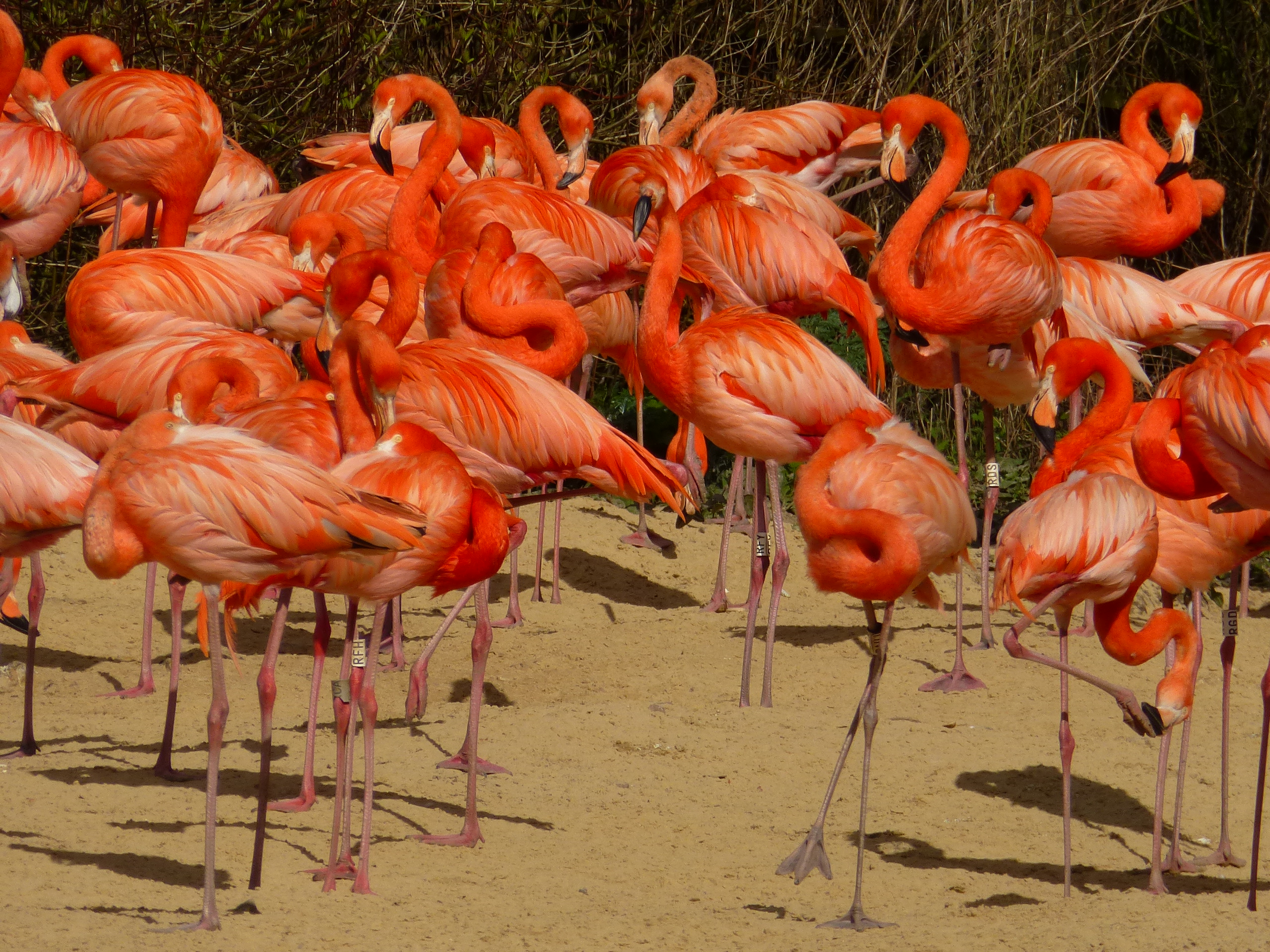 Caribbean flamingos- the most tropical of all six species. Here on the beach in Gloucestershire? Well, on their newly-sanded nesting area at WWT Slimbridge. But it does look like a Caribbean idyll!
Caribbean flamingos- the most tropical of all six species. Here on the beach in Gloucestershire? Well, on their newly-sanded nesting area at WWT Slimbridge. But it does look like a Caribbean idyll!
At this festive, wintry time of the year, "flamingos out in the cold" seems topical to be writing about. For whilst some flamingos do like to live in warmer parts of the world, and can be seen on beautiful sun-kissed beaches, many populations favour habitats that are not in the least inviting for us human beings.
Some readers may already know about the inhospitable lakes that the lesser flamingo likes to live in. With their highly alkaline pH that can strip human skin to the bone, the soda lakes of the African Rift Valley might be in the tropics, but they certainly aren't a tropical paradise. Unless you're a flamingo of course. Here's an article I wrote about lesser flamingos and their toxic home back in 2017: http://theconversation.com/africas-most-toxic-lakes-are-a-paradise-for-fearless-flamingos-70817
 Vast flocks of lesser flamingos, with a handful of paler greater flamingos in the middle of this picture, stretch into the horizon. Lesser flamingos are perfectly adapted to inhabit the soda lakes that are scattered down the Rift Valley of East Africa.
Vast flocks of lesser flamingos, with a handful of paler greater flamingos in the middle of this picture, stretch into the horizon. Lesser flamingos are perfectly adapted to inhabit the soda lakes that are scattered down the Rift Valley of East Africa.
So lesser flamingos are truly tropical birds. They like it hot. Their larger cousin, the greater flamingo is also found in east Africa and into Asia, as well in Europe too. It is more cold tolerant than the lesser flamingo and can survive in areas where the weather turns chilly. However, greater flamingos will still travel to better climates if the weather turns too cold for a long time. These birds will fly nomadically around southern Europe and the Mediterranean seeking more welcoming feeding, preening and resting grounds in less warm seasons.
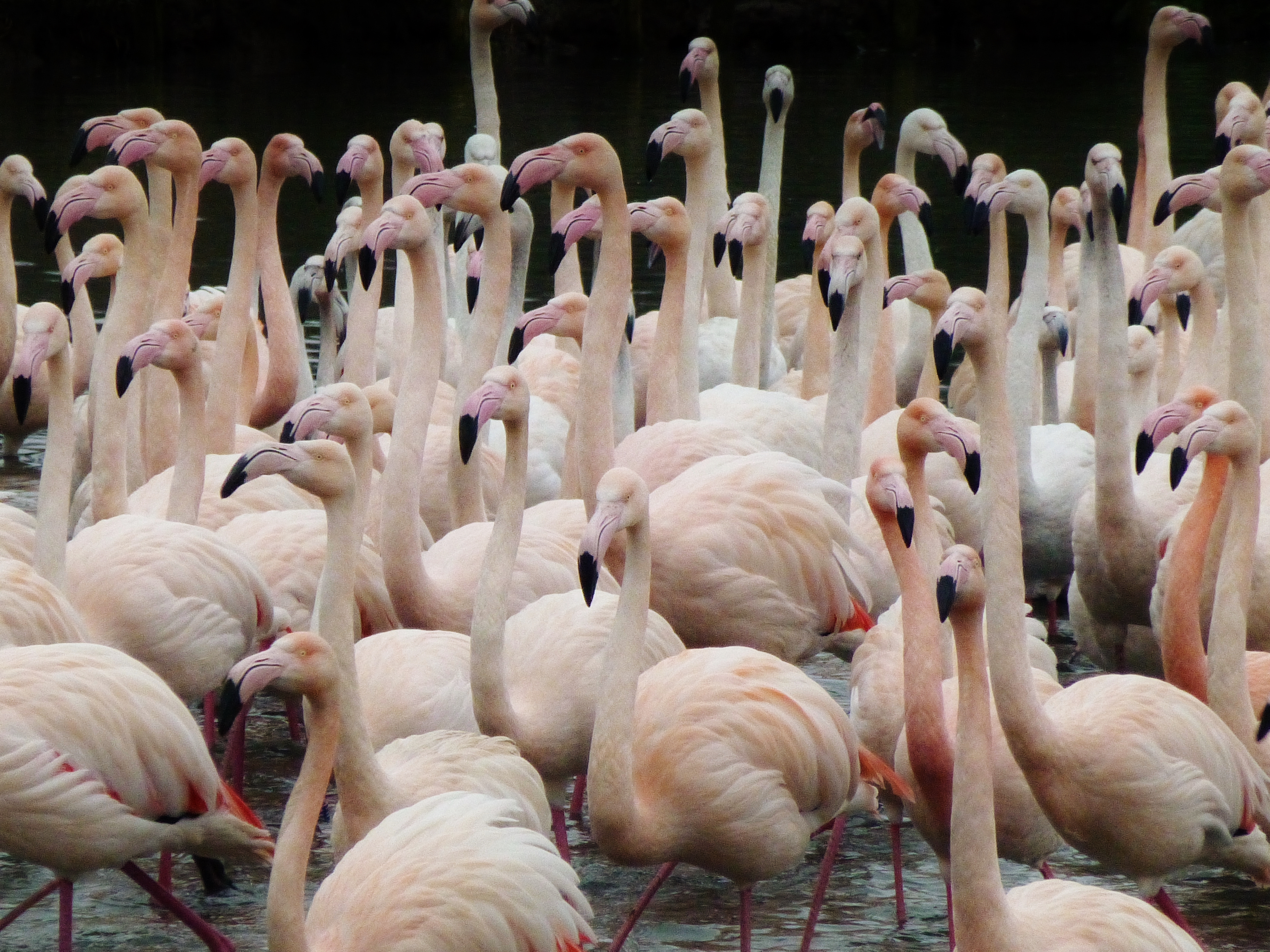 Greater flamingos can live in African and European climates. But still don't like it too cold. They will move to warmer areas in the winter if the weather turns nasty.
Greater flamingos can live in African and European climates. But still don't like it too cold. They will move to warmer areas in the winter if the weather turns nasty.
The flamingos best adapted to cope with the biting cold are the three species that live in South America. These birds (the Chilean, Andean and James' flamingos) are commonly found in habitats where temperatures plummet below freezing and they have to deal with exposure to bright sunshine with high UV levels, and strong winds that blow in across the Andes Mountains. Scattered throughout the mountains of Peru, Bolivia, Chile and Argentina are salt lakes and other wetlands that are important feeding and breeding grounds for these three flamingo species. These extremely remote, wild places can support huge flocks of flamingos that can vanish overnight when they suddenly move to another lake in another part of the mountains.
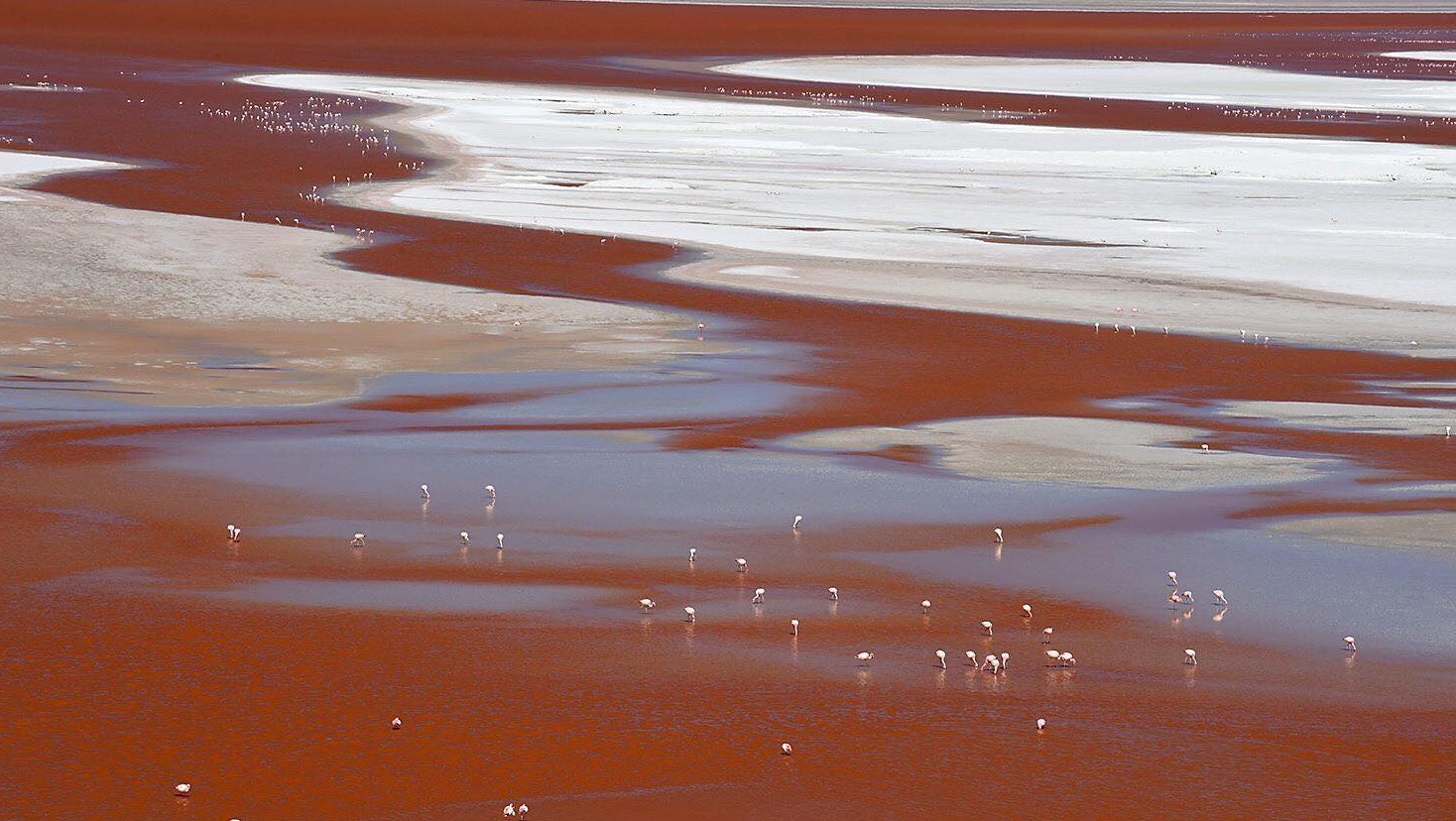 The red waters of Laguna Colorada in the Bolivian Altiplano. Forging flamingos feed on the blooms of algae that partly colour the lake red. Photo kindly provided by S. Reichle.
The red waters of Laguna Colorada in the Bolivian Altiplano. Forging flamingos feed on the blooms of algae that partly colour the lake red. Photo kindly provided by S. Reichle.
Lakes used by the South American flamingos can occur in a geographic area called the Altiplano. A large area of flat land, at a very high elevation, which drains rivers that run off from the mountains. So high is the Altiplano that the air lacks oxygen. These flamingos not only cope with the cold, extreme exposure and temperamental weather but they can also fly long distances in this very poorly oxygenated air. True heroes of the bird world!
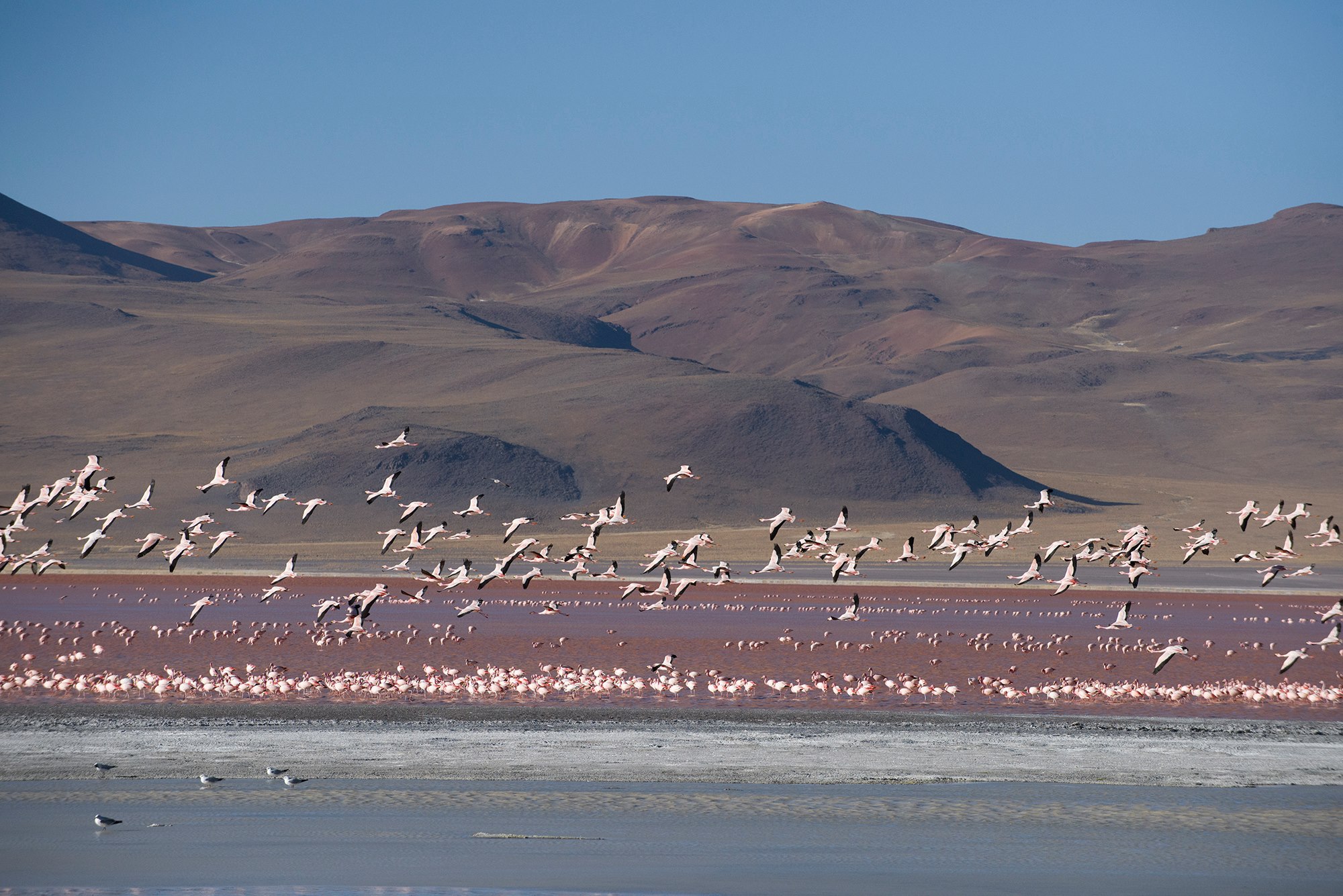 James' flamingos in-flight over the Altiplano. Nestled between mountains, this area of wetland is at a very high altitude of (on average) 3750 metres above sea level. Photo kindly provided by S. Reichle.
James' flamingos in-flight over the Altiplano. Nestled between mountains, this area of wetland is at a very high altitude of (on average) 3750 metres above sea level. Photo kindly provided by S. Reichle.
At WWT, you can see first-hand an example of the creatures from this wild and remote South American ecosystem- with over 120 Chilean flamingos at Slimbridge and flocks of this species at Martin Mere and Washington, and our flock of multi-coloured Andean flamingos at Slimbridge too. But perhaps most uniquely, we still have our wonderful James' flamingo. And he tells a very interesting story of these cold, mountain lakes.
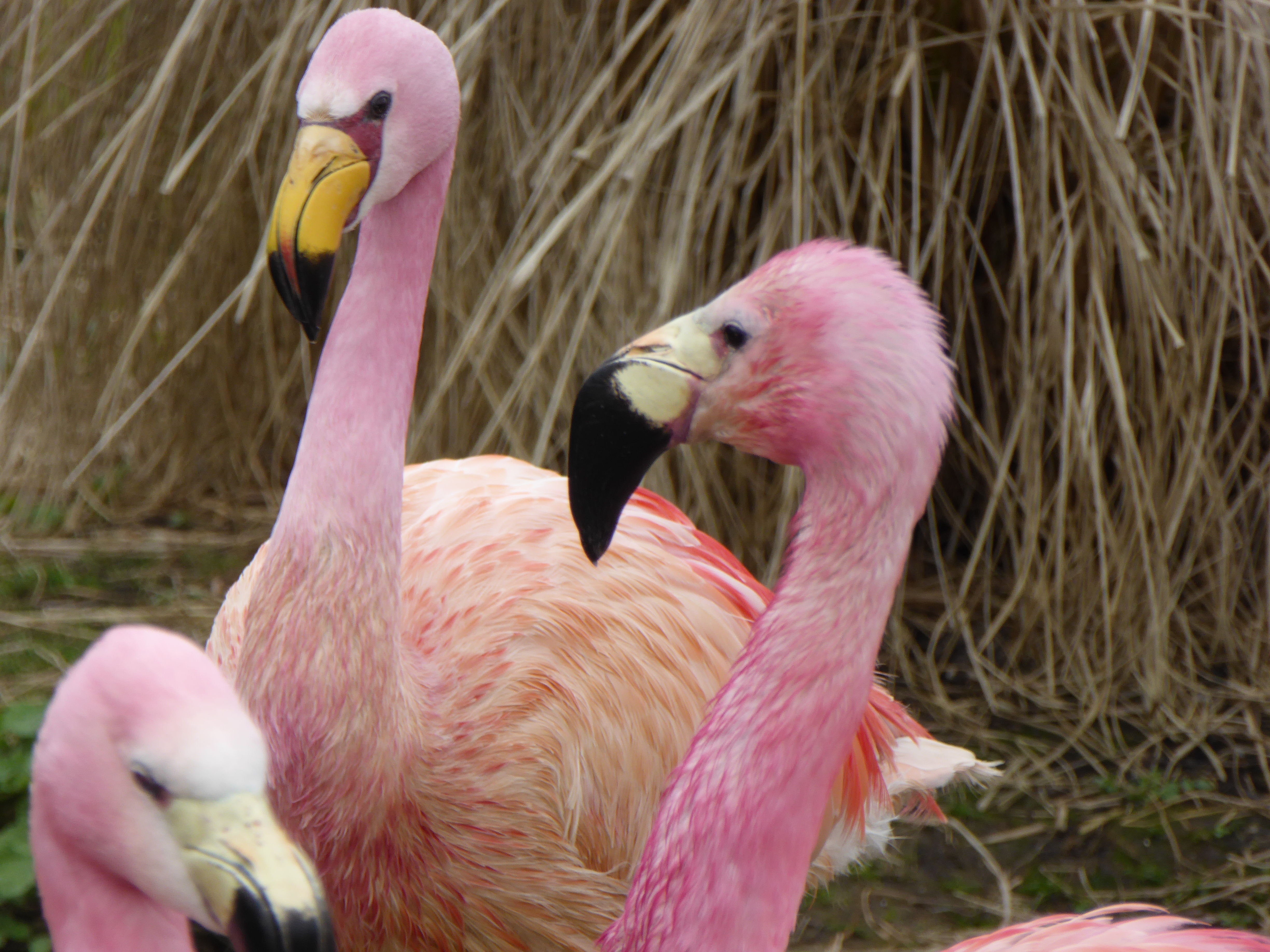 A slice of South America. But why is Mr James even more special than normal...?
A slice of South America. But why is Mr James even more special than normal...?
Whilst we know Mr James as a James' flamingos, his species also has another name- the puna flamingo. And the puna is the habitat that this flamingo species comes from. High-altitude grassland, with a peppering of wetlands, marshes and salt lakes makes an ideal home for these birds. Living at elevations of 3200 to 4000 metres above sea level, wild puna flamingos have to cope with an average yearly temperature of around 7 to 8 degrees C. Frosts and freezing conditions overnight are common. And flamingos have been known to freeze into a lake whilst roosting- having to wait for the sun's arrival at dawn to free them.
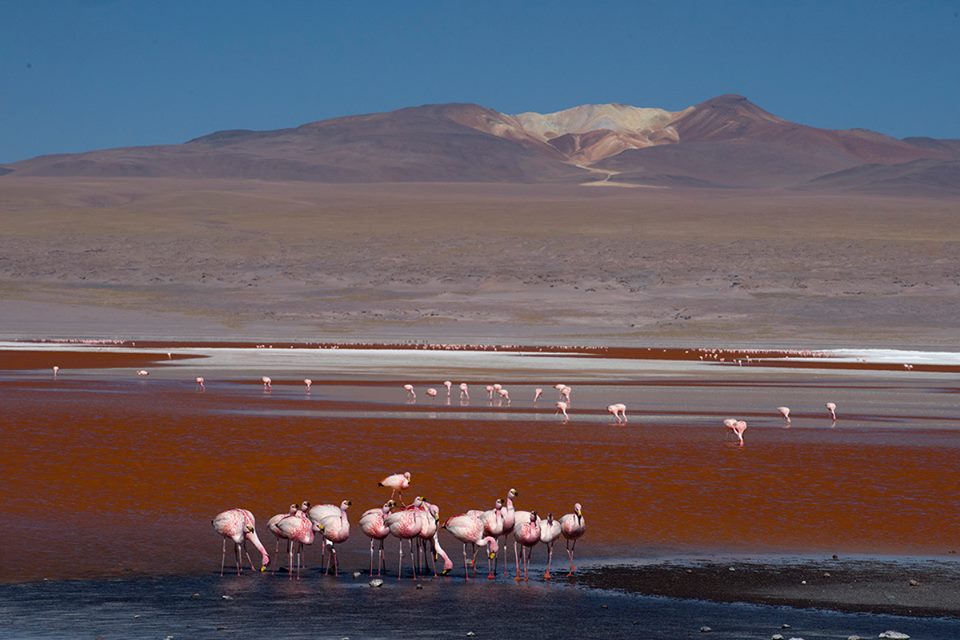 Puna flamingos in the puna habitat. These birds are so tied to this specific ecosystem that they share its name. The exposed, barren nature of this ecosystem is clearly evident in this picture. Photo kindly provided by S. Reichle.
Puna flamingos in the puna habitat. These birds are so tied to this specific ecosystem that they share its name. The exposed, barren nature of this ecosystem is clearly evident in this picture. Photo kindly provided by S. Reichle.
So why do flamingos need to be in areas that are above freezing or that will thaw out quickly? This is all down to how they collect their food. As filter-feeders, reliant on open water for foraging, flamingos will quickly go hungry when lakes are iced over and they cannot access their food. Being so high up in the Andean mountains, the lakes here get a lot of sunshine. So even though the temperature will drop below freezing overnight, they will thaw quickly come the dawn and the birds can get their breakfast. Saltwater also has a lower freezing point than freshwater, and this means these high-altitude flamingos can feed for longer when it gets colder. But like flamingos in less chilly parts of the world, puna, Andean and Chilean flamingos will move between lakes should feeding in one area become too difficult for too long.
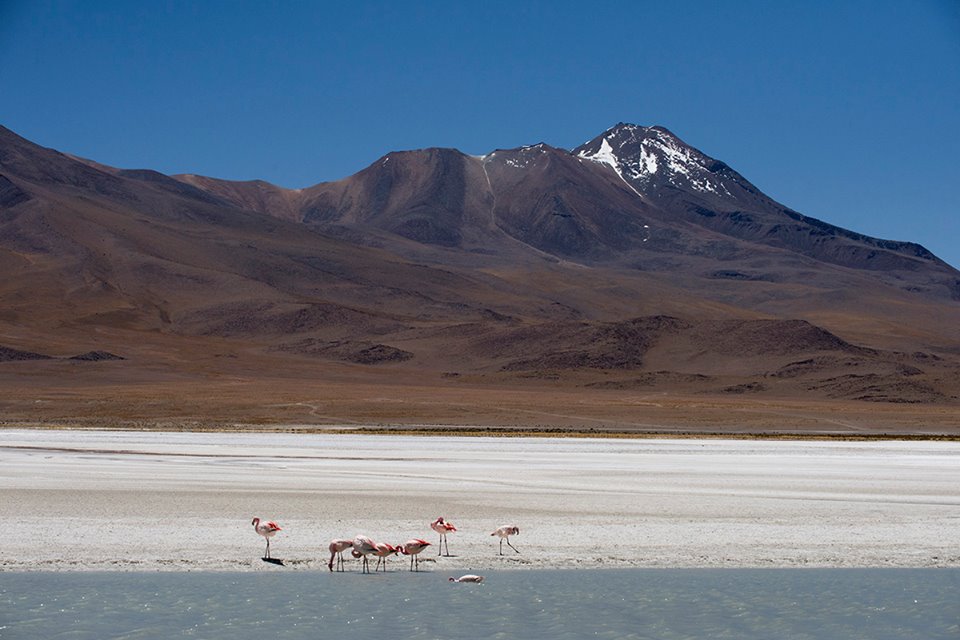 Snow on the mountain. Puna flamingos bathe and preen in the cold waters of high-altitude lakes. Photo kindly provided by S. Reichle.
Snow on the mountain. Puna flamingos bathe and preen in the cold waters of high-altitude lakes. Photo kindly provided by S. Reichle.
Puna flamingos are reliant on diatoms (microscopic algae) for their diet. Their deep bills have a very fine filtering mechanism (called lamellae) that allows them to collect this algae from the shallow waters of these salt lakes. In this regard, they are very similar to the lesser flamingo that has also evolved to feed on microscopic plant material. These two flamingo species have just taken different evolutionary pathways- one to find a habitat in warm parts of the world and the other to live in the high, snow-covered mountains of South America.
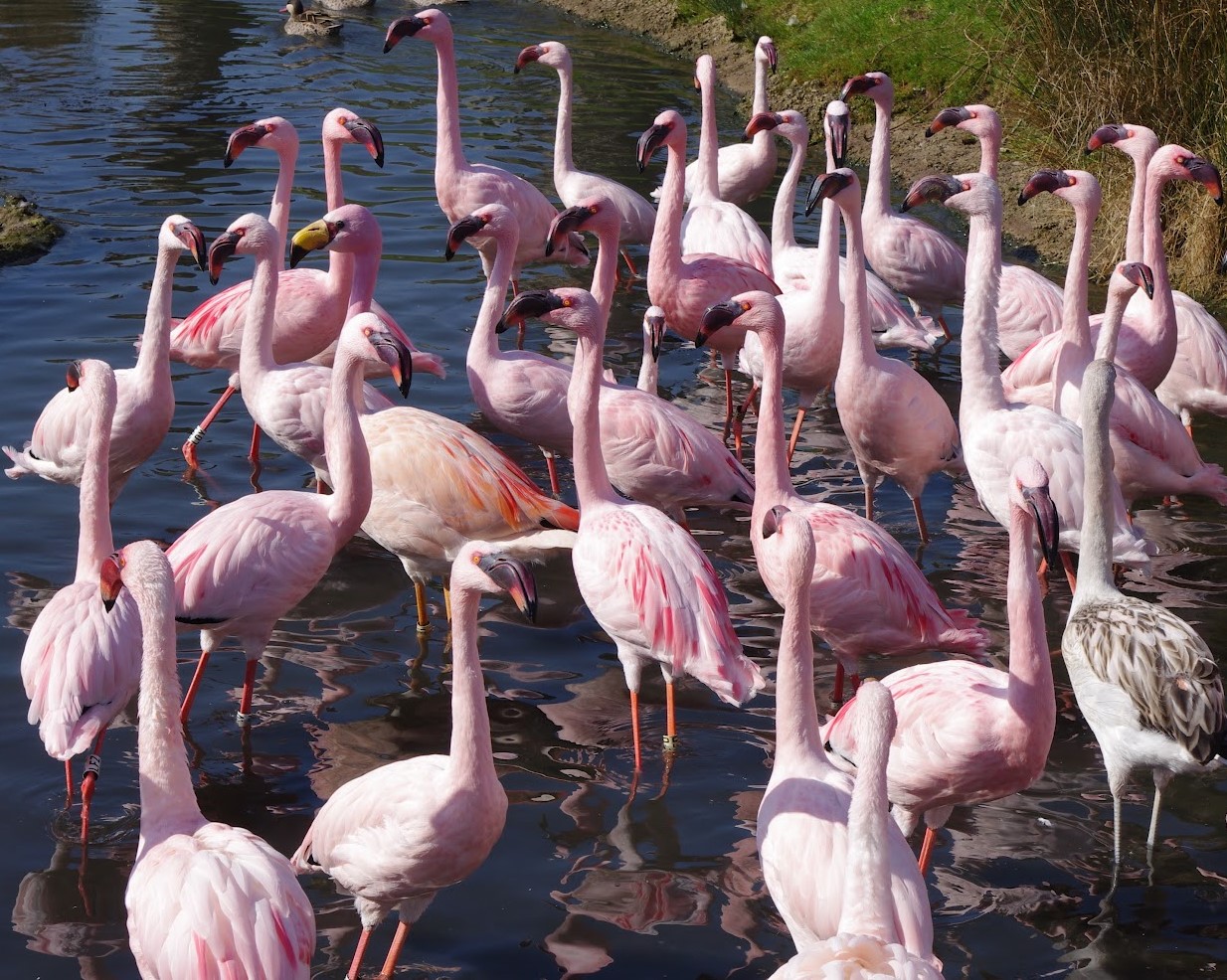 Family resemblance? For a couple of years, up to summer 2012, Mr James lived with the lesser flamingo flock. You can see the similarity in body size and bill structure. Both species have deep-keeled bills, evolved for collecting teeny tiny algae and micro-organisms out of the water. Thank you to C. Kight for providing this image.[/caption]
Family resemblance? For a couple of years, up to summer 2012, Mr James lived with the lesser flamingo flock. You can see the similarity in body size and bill structure. Both species have deep-keeled bills, evolved for collecting teeny tiny algae and micro-organisms out of the water. Thank you to C. Kight for providing this image.[/caption]
And finally, to leave you with something to impress your friends and family with over a Christmas get-together, one of my favourite biological words... These algae, diatoms and other microscopic organisms that flamingos feed on in these unfriendly wetlands are called extremophiles. A brilliant word meaning an organism that loves to live in really extreme conditions. And I guess this relates to the birds themselves too.
A very happy Christmas to all of WWT's flamingo followers.
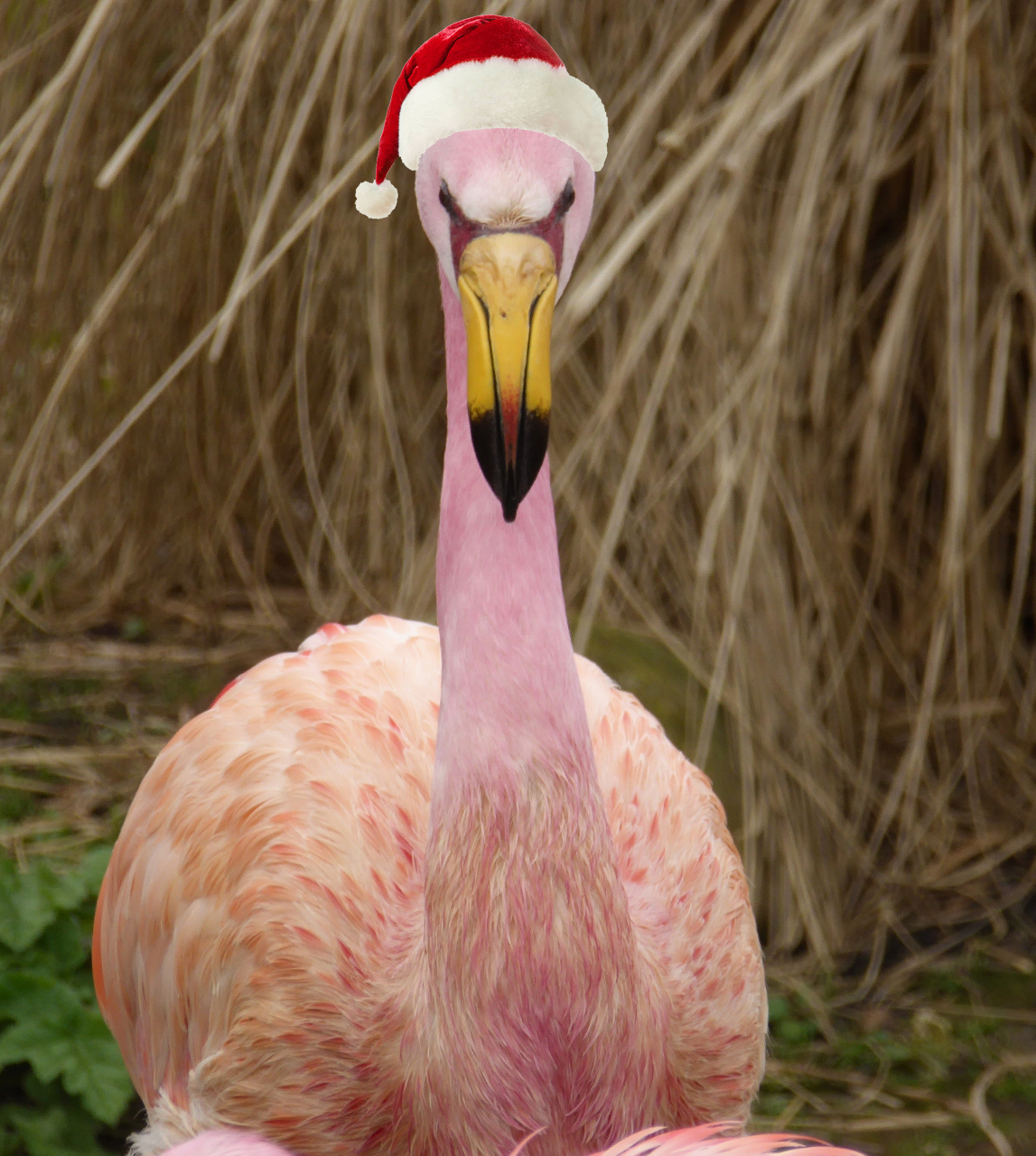 Mr James celebrates Christmas in style. Our puna flamingo knows how to bring some festive cheer. After all, he's built for the cold!
Mr James celebrates Christmas in style. Our puna flamingo knows how to bring some festive cheer. After all, he's built for the cold!



